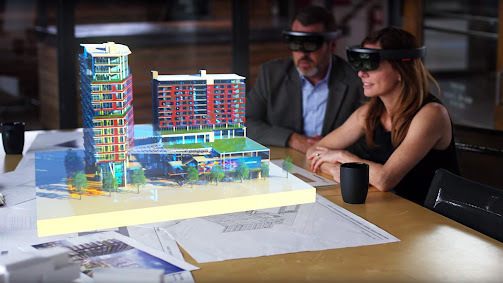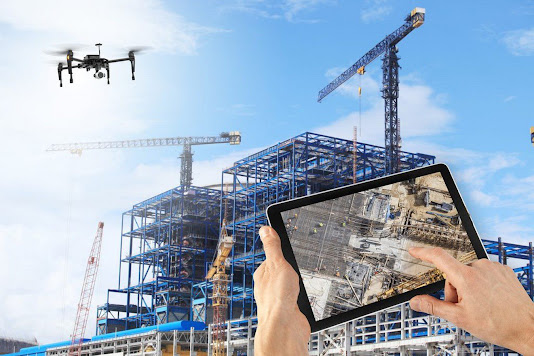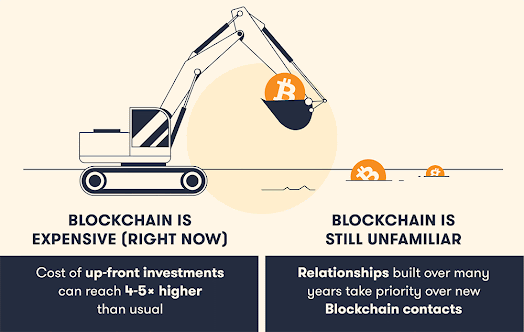Introduction
The word "Metaverse" was created to define a virtual environment that fuses the real and virtual worlds, and it is influencing how we conduct our daily lives, do business, and connect with others. The idea of a "metaverse" has been around for a long time, but only recently have we had the technological capacity to make it a reality, and the implications are enormous [1]. One of the oldest and most important subfields of engineering, civil engineering, follows this pattern. This article discusses ten civil engineering metaverse applications that are changing the way structures are conceived, constructed, and maintained.
From blockchain to 3D modeling software, new tools are empowering engineers to create safer, more efficient, and more sustainable projects for the people they serve. Civil engineers may remain ahead of the curve by adopting these innovative technologies and using them to create a better society.
Virtual Design and Construction (VDC)
Engineers can now see, test, and revise the design of a building or infrastructure project before breaking ground thanks to Virtual Design and Construction (VDC), a computer simulation of the construction process. Using VDC technology, architects and builders may develop accurate 3D models of their projects and run virtual simulations of the building process in the Metaverse [1], [3]. As a result, design flaws may be discovered and fixed, building processes can be fine-tuned, and unnecessary debris can be thrown away. Construction projects may be completed faster and cheaper with the use of VDC technology, which also enhances communication and cooperation amongst all parties involved [2].
Building Information Modelling (BIM)
Digital depiction of the physical and functional attributes of a building or infrastructure project is known as Building Information Modeling (BIM). The building information modeling (BIM) process employs the use of 3D models and data to symbolize the planning, constructing, and maintenance of a building or structure [5]. Engineers can better communicate with all parties involved in a project and coordinate its design and construction as a result. Engineers may boost the project's efficiency, safety, and sustainability with the use of BIM's data and insights for operation and maintenance of buildings and structures [6].
Virtual Reality (VR)
Engineers may use VR to explore and interact with a simulated world as if they were really there. VR allows for the creation of accurate virtual models of buildings and structures, which can then be explored in real time by engineers [7]. This is especially helpful for instructing engineers and construction workers on the building process and for visualizing and testing the design of complicated buildings like bridges and skyscrapers [5]. Virtual reality technology may also be utilized to lessen the workload of all those involved in a building project, as well as to cut down on the related expenses and dangers.
Augmented Reality (AR)
Augmented reality (AR) is a technology that superimposes digital data onto the actual environment, allowing engineers instantaneous access to data and information about their projects. Augmented reality may help with construction and maintenance by facilitating better communication and cooperation amongst project stakeholders [4]. One example of how augmented reality may be put to use in the workplace is in the delivery of technical data and information, the resolution of problems in the field, and the coordination of efforts with off-site specialists. Because AR lets engineers get to data and information without having to physically enter dangerous or inaccessible regions, it may also be utilized to make construction and maintenance safer [8].
Drones
Inspection and surveying of construction sites, buildings, and infrastructure may be performed with the use of drones, which are tiny unmanned aerial vehicles (UAVs) [9]. Drones' capacity to record high-definition video and stills enables them to offer engineers with comprehensive data on the status of a project, letting them make better choices based on that data [10]. Drones have several applications in the construction industry, including site mapping, damage assessment, and progress monitoring. Drones may also be used to increase the security and productivity of construction and maintenance by gathering data for engineering simulations and assessments.
Internet of Things
The IoT facilitates the transfer of data and insights in real time via connected devices like sensors and cameras. The Internet of Things (IoT) may be used to civil engineering in order to track how well structures are holding up, ensure they are secure, and head off any problems before they arise. The Internet of Things (IoT) has several applications in civil engineering, including the monitoring of building and infrastructure performance and the prediction and prevention of possible problems [1]. IoT has a wide range of potential applications, including but not limited to HVAC system efficiency enhancement, environmental change and danger detection, and building structural integrity monitoring. Engineers may enhance the security, efficiency, and longevity of their projects by collecting and analyzing data from IoT devices.
Artificial Intelligence
Computing operations that normally need human ability, such as pattern recognition and decision making, may now be automated with the help of artificial intelligence (AI) [9]. Artificial intelligence (AI) may be utilized in civil engineering to enhance the planning, constructing, and maintenance of structures. Building information modeling (BIM) and internet of things (IoT) data analysis is one use of AI in the construction industry. Engineering procedures, such as construction scheduling and resource allocation, may be made more effective with the use of AI.
Cloud Computing
Rather of keeping data and programs on their own computers or server, engineers may now take use of cloud computing, which stores everything online. Cloud computing has several potential applications in civil engineering, including the enhancement of teamwork and communication among participants and the facilitation of data storage and analysis [1]. Cloud computing, for instance, may be used to store and retrieve building information models, construction schedules, and project management tools, and to facilitate communication and cooperation amongst geographically dispersed teams. Data from Internet of Things (IoT) and artificial intelligence (AI) systems may be stored and analyzed with the use of cloud computing, allowing engineers to make better choices [5].
Digital Twin
A digital twin is an in-depth simulation of a real-world structure or piece of infrastructure, down to the smallest detail. With the use of digital twin technology, architects and builders may virtually test and improve their creations before putting them into service [3]. For engineers, this means preventing problems from ever occurring and boosting the reliability, productivity, and longevity of their projects. Building management systems, such as HVAC and lighting systems, may also benefit from digital twin technology, which can facilitate better communication and cooperation among project stakeholders.
Blockchain
A distributed ledger, or blockchain, is a system that facilitates the safe and transparent exchange of digital assets and data [10]. Secure and transparent record-keeping of building and infrastructure information, such as construction schedules, design drawings, and maintenance data, may be supported by blockchain technology in civil engineering [2]. In addition to ensuring the safety and authenticity of construction project supplies and tools, blockchain technology may be utilized to facilitate secure and transparent procurement and payment procedures. Blockchain technology may enhance the effectiveness and reliability of civil engineering projects by providing trustworthy records.
Conclusion
In conclusion, this blog has just scratched the surface of the ways in which the metaverse may be put to use in the field of civil engineering. Engineers now have access to cutting-edge tools that allow them to think outside the box when it comes to the design, construction, and maintenance of structures and infrastructure, ultimately benefiting the people who rely on them. Civil engineers can improve the world's sustainability, efficiency, and security by adopting these new technology. The potential for the metaverse to alter civil engineering is enormous, and we can't wait to see what the future holds in terms of technologies like virtual design and construction, the Internet of Things, artificial intelligence, cloud computing, digital twins, and blockchain.
References
- Muhammad, A. A., Yitmen, I., Alizadehsalehi, S. and Celik, T. (2020) Adoption of virtual reality (VR) for site layout optimization of construction projects. Teknik Dergi/Technical Journal of Turkish Chamber of Civil Engineers.
- Adami, P., Rodrigues, P. B., Woods, P. J., Becerik-Gerber, B., Soibelman, L., Copur-Gencturk, Y. and Lucas, G. (2021) Effectiveness of VR-based training on improving construction workers’ knowledge, skills, and safety behavior in robotic teleoperation. Advanced Engineering Informatics.
- Segal, A. (2021) Metaverse – how is it in Russian? About the Construction of the Russian sector of the Metaverse. Artificial societies.
- Duan, H., Li, J., Fan, S., Lin, Z., Wu, X. and Cai, W. (2021) Metaverse for Social Good: A University Campus Prototype. In: MM 2021 - Proceedings of the 29th ACM International Conference on Multimedia.
- Ai, T. (2021) Metaverse Theory. SSRN Electronic Journal.
- Siyaev, A. and Jo, G. S. (2021) Neuro-Symbolic Speech Understanding in Aircraft Maintenance Metaverse. IEEE Access.
- Getuli, V., Capone, P. and Bruttini, A. (2021) Planning, management and administration of HS contents with BIM and VR in construction: an implementation protocol. Engineering, Construction and Architectural Management.
- Schiavi, B., Havard, V., Beddiar, K. and Baudry, D. (2022) BIM data flow architecture with AR/VR technologies: Use cases in architecture, engineering and construction. Automation in Construction.
- Mystakidis, S. (2022) Metaverse. Encyclopedia.
- Hollensen, S., Kotler, P. and Opresnik, M. O. (2022) Metaverse – the new marketing universe. Journal of Business Strategy.











No comments:
Post a Comment